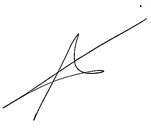PROLIFIC CREATIVITY

This week I want to share an excerpt from the book “The Treasure Map”, which I wrote along with my friend Francesc Miralles.
“Creativity can be learnt, just like we learn to read.”
SIR KEN ROBINSON
A prolific creativity is a gift that all humans possess -we are probably the only creatures on this planet with the ability to vary their course at will and shape their destiny.
People who live with pets, often point out that these are predictable and repeat the same habits daily. The human species, however, has developed an almost unlimited capacity to adapt to the environment and reinvent their lives, but often we are not aware of this power.
Creativity is not only typical of artists and creative advertisers, although their views will help us deepen into their key to find prosperity.
Everyone is creative since birth. Deep inside everyone, there is an inexhaustible source of ideas that shape their own reality.
Michelangelo Buonarroti, the artistic genius of the Renaissance, explained the prolific creativity as a discovery of something that dwells within us. To make a sculpture, to his concern, he stated that the form was already into the block of marble before he started work on it. The mission of the artist is only to remove what is left and release what was already in there.
Similarly, any person cherishes within them ideas that can change their life and make them ascend to a higher rung. All you have to do to release them is to learn to use the tools that lead us to the essence of our creative power. To do it, we will resort to professionals’ factories of ideas.
Resources for creativity
In his provocative essay “It’s Not How Good You Are, It’s How Good You Want To Be”, the prestigious creative Paul Arden gives a few keys to unleash our creative energy. Assuming that our ability to generate ideas has nothing to do with our academic curriculum, he advises the following to model one’s life:
- Try to reach the unreachable. Pursuing goals that exceed our means is the most effective creative engine out there. If you think you are unable to accomplish something, insist that way to prove it was a false belief of yours.
- Do not seek praise, but criticism. If instead of waiting for a simple approval, we asked people with good judgement: “Is everything okay? How can I improve?”, we will achieve excellence.
- Try to work with the best. Top professionals are often stubborn and difficult people, but allow us to make a creative leap beyond our limits.
- Do not hide your ideas. Since keeping our own ideas mine our energy, it is best to let them flow and share them with others. Only then they become a beneficial creative energy.
- Make the most of this opportunity. Waiting for the perfect opportunity to get something can block our ways. We have to put our efforts into what we have at hand, whether large or small.
- Enjoy errors. Creatively speaking, making it right is boring and brings the risk that we get settled in old ideas. It keeps us from learning or improving, because it is the opposite of originality.
- Do not fear the absurd ideas. To break the impasse it is sometimes necessary to do the opposite of what we would do under normal conditions. This is also called “lateral thinking”, i.e., the inspiration that springs from the unconscious. Let’s deepen into the creative process with the help of one of the most brilliant theory makersl about the stages of idea generation, Graham Wallas. In his essay “The Art of Thought”, published back in 1926, he explained the process of creating something new this way:
The creative process
1. Preparation. Our mind is focused on an issue or problem and, once focused, it explores its dimensions and characteristics.
2. Incubation. The problem is internalized into the right part of the brain and it remains there without any sign of anything happening externally.
3. Intimation. Once we have become familiar with the matter, we have a feeling that the solution is near.
4. Illumination. Technically called insight, at this stage the creative idea emerges from within and becomes conscious.
5. Verification. The idea is tested and perfectioned by applying it to the outside world.
Beyond this theoretical description, what we want is to stimulate each of the five phases to our creative energy to flow naturally and in an uninterrupted way. These are just some hints to enable different stages of the experience and release our prolific creativity:
1. Dealing with problems or issues separately helps us to understand them in all their complexity. Rather than dispersion, the creative moment requires defining the topic we are going to develop ideas about.
2. While incubating an idea, it is useful to enhance lateral thinking activities in which our emotional and intuitive side takes over, like listening to music, reading poetry or even dreaming.
3. Do not force an idea by breaking the hatchet too early. You have to let it mature. What’s more, the pressure to find a solution to a problem usually hinders our mental agility.
4. We should take along a small notebook to write down the insights that arise spontaneously. Since we cannot know when a new idea may “break the shell”, we must be prepared to catch it before it flies away.
5. Ideas grow old or lose their meaning if they are not put into practice. If we want to maintain our well-oiled creativity, we must apply our inspirations in the testing world.
In further posts of this blog Solutions, we will sail on the seas of creativity and provide reflections that I hope you find useful.
Have a happy week,
Álex Rovira


Para dejar un comentario en cualquiera de los artículos del blog deberás identificarte con tu perfil de usuario de Facebook y podrás decidir si quieres que se publique en el Sitio Web y además en tu muro de Facebook. SID & FORTUNE, S.L.U. es la Responsable del Tratamiento de tus datos, con la finalidad de moderar y publicar tu comentario con tu nombre. En ningún caso se publicará tu correo electrónico.
Tienes derecho de acceso, rectificación, supresión, limitación, oposición al tratamiento y portabilidad. Puedes ejercitar tus derechos en [email protected]. Más información en la Política de privacidad.